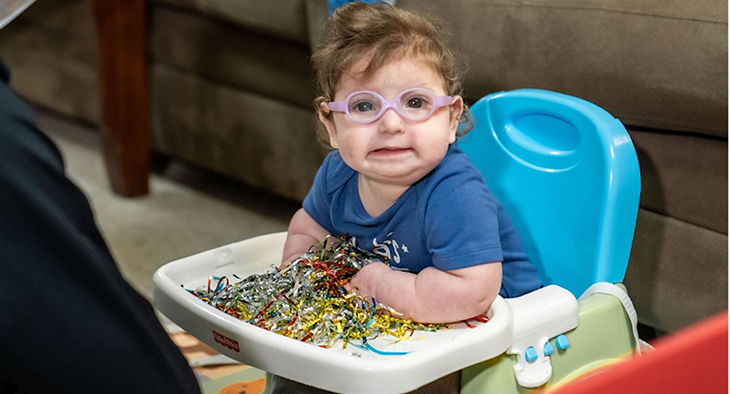New Therapy For Sisters With Rare Disorder Proves Successful After Girls Learn To Walk And Talk

Discovering that their newborn, Bella, had a genetic mutation affecting neuromotor development, Emily and Charlie Burkhart faced the daunting reality of a rare condition known as CASK Disorder, which only impacts around 300 infants globally.
The distressing news echoed a familiar chord for the Burkharts, as they had encountered a similar situation with their older daughter, Anna. Bella’s distinctive small head was an early indicator of the genetic disorder, prompting Emily’s suspicions, given her experience with Anna’s health challenges.
A decade prior, doctors had painted a bleak picture for Anna, predicting a life devoid of walking, talking, or fulfillment. However, against all odds, Anna not only defied these predictions but also embraced a vibrant life. Today, she navigates school routines, engages with friends on TikTok, contemplates hair dyeing, and even secured a spot on the middle school cheerleading squad.
In both Anna and Bella’s cases, initial signs of the disorder were subtle at birth, but they soon manifested in delayed developmental milestones, such as difficulty grasping objects, rolling over, and crawling. Anna, for instance, did not walk until she was almost 3 years old, prompting her parents to seek answers for her developmental delays.
“Basically, she was just going to struggle, and she was probably going to be wheelchair-bound and non-verbal,” she said. “I just wasn’t going to accept that.”
After an arduous journey of testing and hospitalizations, Anna was diagnosed with a rare mutation of the CASK gene. The Burkharts, armed with little information about the condition, embarked on a journey to Roanoke, Virginia, where Anna could undergo intensive therapy through an experimental research protocol at the Neuromotor Research Clinic at the Fralin Biomedical Research Institute at Virginia Tech. Therapy consisted of 3 to 6 hour days, 5 days a week, for at least 4 weeks at that.

Finally Turning a Corner
The clinic, accustomed to working with children facing various disabilities affecting brain development, had not encountered a case like Anna’s before.
Dory Wallace, a senior occupational therapist from the center said, “What Anna needed was different than previous kids we’d worked with. It was about helping her learn how to pay better attention, how to use her words, and how to interact and engage with the people in her environment. Once we met her, we completely changed what we thought we were going to do to meet her needs.”
The uncertainty did not deter them, and to their amazement, Anna responded positively to the therapy.
“I love seeing that light switch go on when a child realizes she’s learned something new,” Wallace said. Two weeks later, the change was already dramatic.
“She was sorting colors and she was sitting still to play with a toy. She was just doing all the things that we were able to want and expect, plus some,” said Burkhart.
This experience laid the foundation for the family’s future optimism, particularly when faced with Bella’s diagnosis a decade later. Bella’s birth, marked by microcephaly, hinted at a potential CASK diagnosis. Her therapy commenced at 14 months old.
“Dory had her doing things the first day that we hadn’t seen Bella be able to do,” said Burkhart. “I started to cry because it was like, ‘OK, we’re in the right place.’”
Charlie, Emily’s husband, witnessed the transformative effects firsthand.
“I’ve never seen Bella work so hard. I videotaped a lot so I can replicate it at home,” he said. “To be able to come down here for a month and get this blueprint and get her going, there are no words to describe how appreciative I am.”
Drawing inspiration from Anna’s progress, the Burkharts harbored high hopes for Bella’s development.
Central to the success of Anna and Bella’s therapy was the I-ACQUIRE program, originally designed for cases of infantile stroke or hemiparesis. Surprisingly, it proved effective in the context of CASK by leveraging the brain’s plasticity to stimulate the affected regions. Techniques such as restraining overactive limbs compelled the child to learn to control the under-utilized ones, illustrating the adaptability and resilience of the human brain.
“We’re learning from each child while we’re simultaneously trying to help that child,” said Stephanie DeLuca, co-director of the Neuromotor Research Clinic. “We provide very specific guidelines for how therapists should deliver the interactions of therapy to help the child progress and maximize their development.”
Watch the heartwarming video below to see how the Neuromotor Research Clinic has been successful at changing lives.



